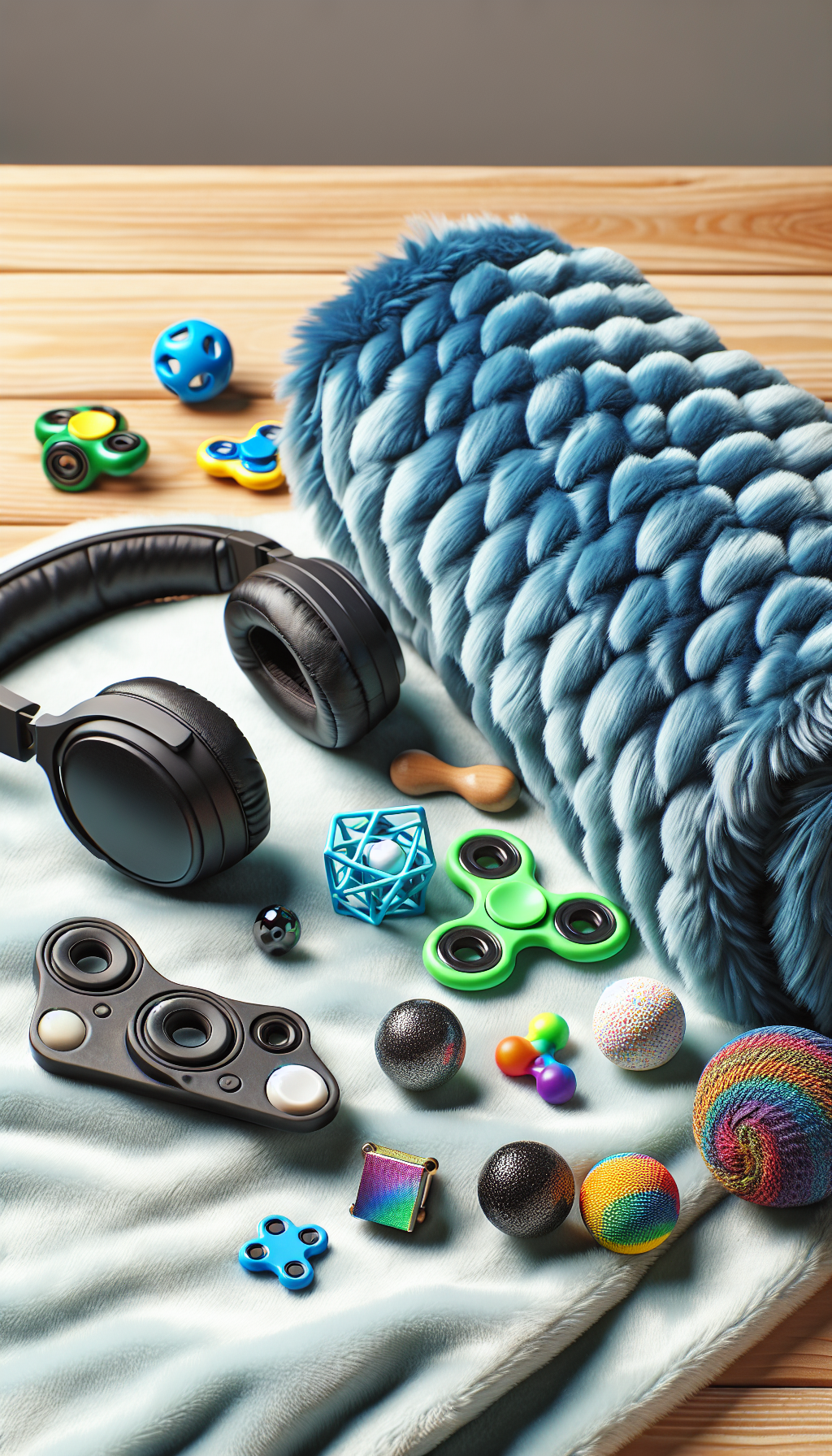Sensory sensitivities can profoundly affect individuals, altering their experiences of the world around them. These sensitivities are often associated with conditions such as autism spectrum disorder, sensory processing disorder, and ADHD, but they can also exist independently. Sensory sensitivities can impact one’s ability to function and interact with others, making the management of these sensitivities crucial for maintaining a high quality of life. This comprehensive guide will explore strategies for managing sensory sensitivities at home, providing tools and techniques to create a supportive environment.
Understanding Sensory Sensitivities
Before exploring management strategies, it’s essential to understand what sensory sensitivities are. Individuals with sensory sensitivities may find certain sensory inputs—like lights, sounds, textures, or smells—overwhelming or underwhelming. These sensitivities can lead to sensory overload, causing discomfort, anxiety, and sometimes behavioral challenges.
Recognizing the signs of sensory sensitivities is the first step towards effective management. Common signs include covering ears to loud noises, avoiding certain textures or foods, becoming distressed by bright lights, or seeking out specific sensory experiences.
For further insight into sensory health and its complexities, consider exploring Sensory Health for a deeper understanding.
Creating a Sensory-Friendly Environment
Assessing the Home Environment
The home environment plays a pivotal role in managing sensory sensitivities. It’s important to assess each room to identify potential sensory triggers. This might include fluorescent lighting, cluttered spaces, or the presence of strong scents. Once these triggers are identified, steps can be taken to minimize their impact.
Modifying Spaces
Creating sensory-friendly spaces involves making changes to the physical environment to reduce sensory triggers. This can include:
- Using soft, natural lighting instead of harsh fluorescent lights.
- Incorporating soft furnishings and textiles to reduce noise.
- Designing clear and organized spaces to prevent visual overload.
- Choosing non-toxic, unscented cleaning products to avoid strong smells.
Designating Sensory Zones
For individuals with sensory sensitivities, having specific areas in the home where they can regulate their sensory input is beneficial. Sensory zones can be spaces dedicated to calming activities, like reading or listening to soft music, or they can be areas where sensory play is encouraged.
Strategies for Daily Routines
Consistent Scheduling
Maintaining a consistent daily routine can help reduce anxiety and sensory overload. Predictable patterns of activity provide a sense of security and structure, making it easier for individuals with sensory sensitivities to navigate their day.
Preparing for Transitions
Transitions between activities can be challenging. Using visual schedules, timers, or transition warnings can help prepare individuals for upcoming changes in activity, reducing potential stress.
Integrative Sensory Activities
Sensory Play
Incorporating sensory play into the daily routine can help individuals with sensitivities to process sensory information more effectively. Sensory bins, tactile crafts, and exploratory games are all excellent ways to engage in sensory play. For more information on the benefits of sensory play, one might explore resources on Exploring the Impact of Sensory Toys on Development.
Mindfulness and Relaxation Techniques
Mindfulness and relaxation techniques, such as deep breathing exercises, guided imagery, or yoga, can be powerful tools for managing sensory overload.
Nutritional Considerations
Diet can have a significant impact on sensory sensitivities. Certain foods can exacerbate sensitivities, while others may help to alleviate them. It’s worth considering the advice found in "The Connection Between Sensory Processing and Nutrition" to understand the role nutrition plays in managing sensory health.
Sensory Equipment and Tools
Weighted Blankets
Weighted blankets provide deep pressure input that can be calming for individuals with sensory sensitivities. They can be particularly helpful for promoting relaxation and sleep.
Noise-Canceling Headphones
For those sensitive to auditory input, noise-canceling headphones can be a great asset, allowing individuals to control their auditory environment and reduce stress from unwanted noise.
Tactile Objects
Fidget tools, stress balls, and other tactile objects can offer a positive sensory experience, helping to focus and calm the individual.
Collaborating with Professionals
Working with occupational therapists or other professionals trained in sensory integration can be incredibly beneficial. These experts can provide personalized strategies and interventions to support individuals with sensory sensitivities.
For those interested in occupational therapy as a resource, "Developing Sensory Skills Through Occupational Therapy" (Avix Health) provides further reading.
Leveraging Technology
Advances in technology have led to new tools for managing sensory sensitivities. Apps and devices designed to customize sensory experiences can be integrated into daily routines to help individuals cope with sensory challenges. The article on "Advances in Technology for Sensory Health Screening" discusses such technological innovations.
External Resources for Further Support
- STAR Institute offers comprehensive information on sensory processing disorders and management techniques.
- Understood provides resources for families of individuals with learning and attention issues, including sensory sensitivities.
- The Out-of-Sync Child shares insights into sensory processing challenges and strategies to address them.
Conclusion
Managing sensory sensitivities at home involves a multifaceted approach that includes creating a supportive environment, integrating sensory activities, understanding nutritional impacts, and leveraging professional support and technology. By implementing these strategies, individuals with sensory sensitivities and their families can navigate daily life with greater ease and comfort, leading to improved overall well-being.
The journey to managing sensory sensitivities is ongoing, but with the right tools and knowledge, it can be a path toward empowerment and resilience for those affected.



